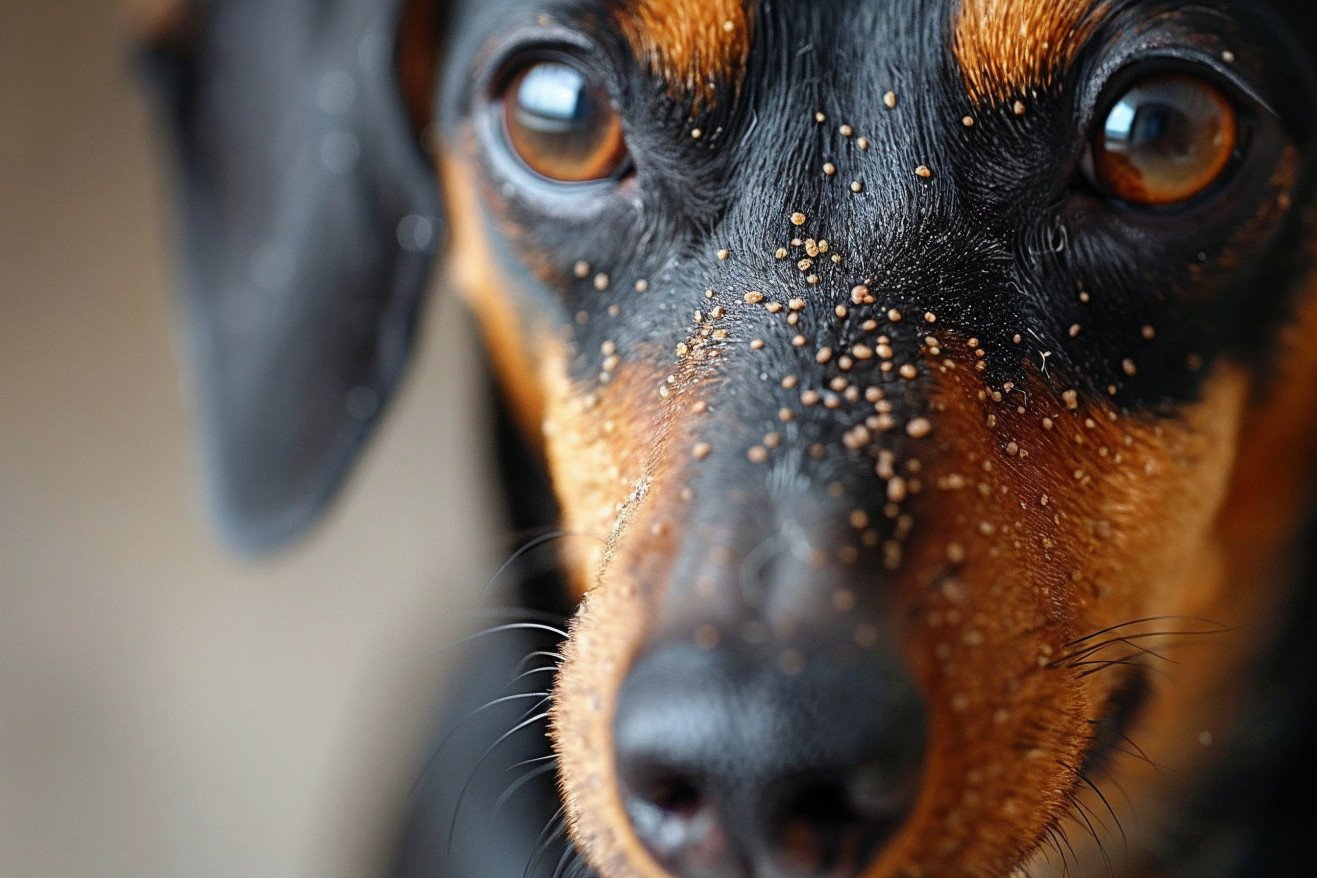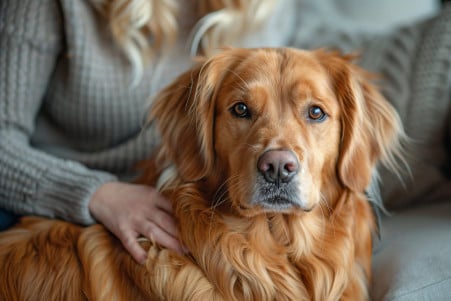Do Dogs Get Lice? What to Know
7 May 2024 • Updated 6 May 2024

Dogs can't get head lice from humans, but they can get their own lice that can lead to skin problems. While dogs are susceptible to lice, they are not the same lice that humans get. Instead, dogs can get infested with dog lice or chewing lice, which are specially adapted to live on the skin, not in the hair. These parasites feed on the skin, causing the dog to experience inflammation, scabs, and severe itching.
To learn more about these parasites and how to keep your dog from getting infested and how to get rid of them if your dog does get lice, we'll take a look at veterinary studies that have delved into the biology and habits of dog lice. This research-based overview will include information on how dog lice differ from human lice, how dogs can get lice, clinical signs of lice infestations in dogs, potential complications, and the best ways to treat lice infestations as recommended by veterinarians. By the time we're done, you'll have everything you need to know to deal with lice in your dog.
Can dogs get lice?
Kinds of Lice That Affect Dogs
There are two main types of lice that can affect dogs - chewing lice and sucking or biting lice. Per West Park Animal Hospital, chewing lice such as Trichodectes canis eat skin debris and dead skin cells, while sucking lice such as Linognathus setosus bite the dog’s skin and feed on blood.
Both types are small, wingless, six-legged insects that are firmly attached to the dog's fur, according to the American Kennel Club. They can be seen with the naked eye and are about 2-4mm long. Lice have a multi-stage life cycle that includes eggs (nits) that are laid on the hair shafts, followed by nymphs that hatch and molt into adult lice, a process that takes 2-4 weeks according to veterinary sources.
While not as common as flea infestations, lice can still cause significant skin irritation, hair loss, and other health issues in dogs if left untreated. It’s important to treat your pet to get rid of these parasites, and the sooner you catch an infestation, the easier it will be to treat.
How to Tell If Your Dog Has Lice
The most common sign of lice is itching and scratching. PDSA lists other symptoms as hair loss, a dry or matted coat, and the presence of lice or nits (lice eggs) in the fur. Other signs include skin irritation, scabs, restlessness, and a general scruffy appearance.
In extreme cases, lice bites can cause anemia, especially in puppies or dogs that are already sick, says WagWalking. To check for lice, you'll need to carefully inspect your dog's coat. Use a fine-toothed comb to part the fur and look for lice or nits.
It's important to catch a lice infestation as soon as possible since it can cause your dog a lot of discomfort and even lead to other health problems if it's not treated. Knowing what to look for is the first step in making sure your dog gets the care they need.
How Do Dogs Get Lice?
According to Elanco Animal Health, dogs are most commonly infected with lice through direct contact with other dogs that have lice or through contact with contaminated grooming tools and bedding. On the other hand, Kingsdale Animal Hospital explains that lice infestations are more likely to occur in dogs that live in overcrowded conditions, have poor sanitation, and have weakened immune systems. Lice are not transmissible between different species of animals because they are host-specific to dogs.
The Merck Veterinary Manual explains that puppies, senior dogs, and dogs with preexisting health issues are more likely to develop severe infestations. To prevent lice infestations, The Wildest recommends that dog owners regularly groom their pets, use flea prevention, and keep their living spaces clean.
How to Get Rid of Lice in Dogs
In general, lice infestations in dogs are treated with topical, oral, or injectable insecticide medications that are specifically labeled for lice control, says Elanco Animal Health. Some of the most common medications used to treat lice in dogs include selamectin, fipronil, pyrethrins, imidacloprid, and lime sulfur dips, notes Kingsdale Animal Hospital. Insecticide collars or sprays can also be used to kill adult lice and nymphs on the dog, according to the Merck Veterinary Manual.
Because insecticides don’t kill lice eggs, treatments need to be repeated every 7-10 days to kill any newly hatched lice, recommends FirstVet. In addition to treating the dog, it’s also important to thoroughly clean all bedding, grooming tools, and living areas to get rid of any lice or eggs that may still be present, says the Merck Veterinary Manual. Proper treatment and environmental control are necessary to completely get rid of a lice infestation in dogs.
Potential Health Risks of Untreated Lice Infestations
According to Elanco Animal Health, severe, prolonged lice infestations can lead to anemia and weakness, especially in puppies or debilitated dogs. Constant biting and scratching from lice can cause skin irritation, infections, hot spots, and hair loss, according to WagWalking. Secondary bacterial infections may develop from broken skin, requiring antibiotic treatment, says PDSA.
Lice bites can also transmit tapeworms if the dog ingests any lice while grooming, according to the Merck Veterinary Manual. Untreated infestations reduce the dog's quality of life and overall health due to persistent irritation and nutrient loss. Proper treatment is essential, especially for vulnerable dogs, to prevent these serious consequences.
Conclusion: How to Prevent Your Dog From Getting Lice
Dogs are most commonly infected with lice through direct contact with other dogs who are infested or through contact with contaminated grooming tools and bedding. Risk factors for lice infestations include living in overcrowded conditions, poor sanitation, and a compromised immune system. Lice are not transmissible to other animal species, as they are species-specific to dogs.
Puppies, senior dogs, and dogs with underlying health problems are at a higher risk for severe infestations, notes the Merck Veterinary Manual. Preventative measures such as regular grooming, flea control, and keeping the living environment clean can help prevent lice infestations, according to The Wildest.
Failing to treat lice infestations can lead to serious skin problems and other health issues for dogs. The best way to prevent your dog from getting lice is to be vigilant about grooming, cleanliness, and the use of high-quality flea/lice prevention products.


